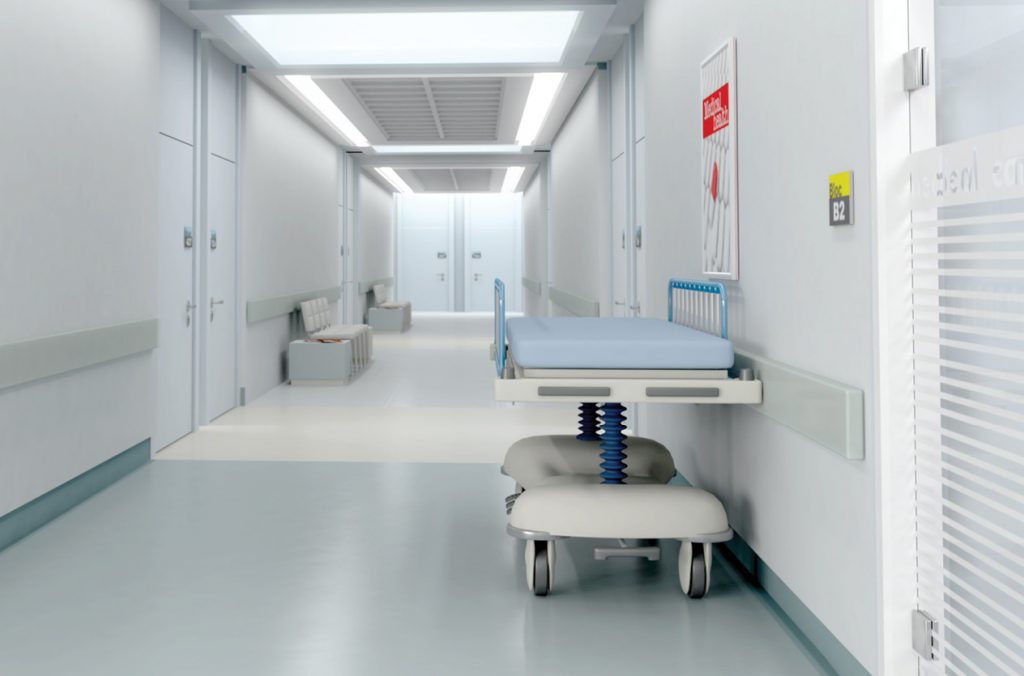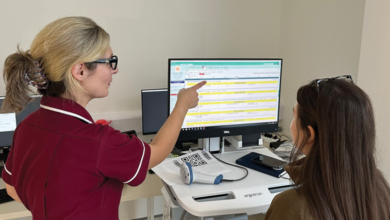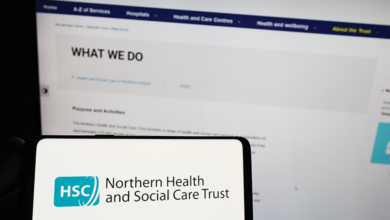Managing emergency admissions
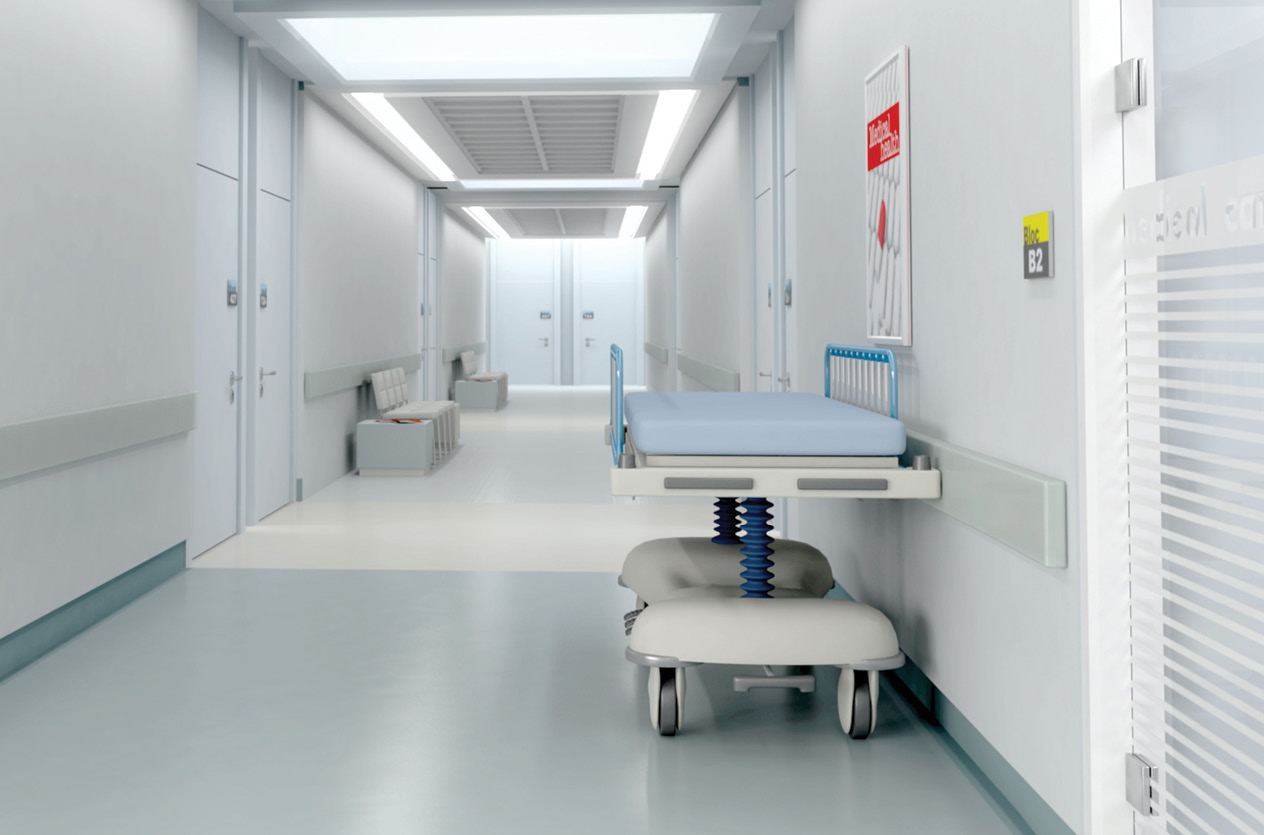
Northern Ireland’s Comptroller and Auditor General (C&AG) has stated that costly and frequently avoidable emergency hospital admissions is impacting on stretched emergency care being used to best effect.
Kieran Donnelly was speaking after a report by the Northern Ireland Audit Office (NIAO) published in November analysed the management of emergency hospital admission in Northern Ireland. The context of the report was set in the context of a 10 per cent rise in emergency admissions in 2015-16 from the previous year. Emergency admissions currently represent 28 per cent of Northern Ireland’s total patient admission and cost over £460 million annually.
Speaking at the release of the report, Donnelly summarised: “My report shows that emergency hospital admissions are costly and frequently avoidable. To compound matters, once admitted, many patients can remain in a hospital bed longer than is necessary. With hospitals struggling to cope with increasing levels of demand for emergency care, particularly among older and chronically ill patients, ensuring that patients are treated in the most appropriate setting is crucial if the
resources available for emergency care are to be used to best effect.”
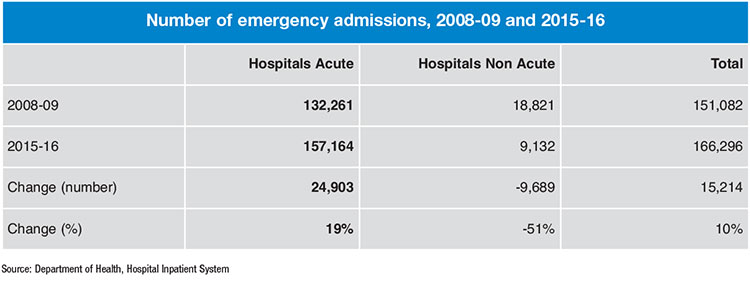
166,000 emergency admissions to hospital in 2015-16
40 per cent of emergency admissions had a hospital stay of less than two days
10 per cent increase in emergency admissions over past eight years
12 per cent increase in attendances at major emergency departments over past eight years
27 per cent of emergency admissions were aged over 75 years
In March 76 per cent of complex hospital discharges occurred within 48 hours (against the 90 per cent target)
In 2015-16 26 per cent of patients leaving a Type 1 or Type 2 emergency department in the last 10 minutes of the 4 hour target were admitted to hospital
The report found that many emergency admissions were potentially avoidable, while others remain in hospital beds longer than necessary. The knock on effect of these issues is not just financial but has also generated disruption and pressure on elective services and patients. It points to a need for a greater focus on effective management for those who are admitted, while avoiding unnecessary admissions.
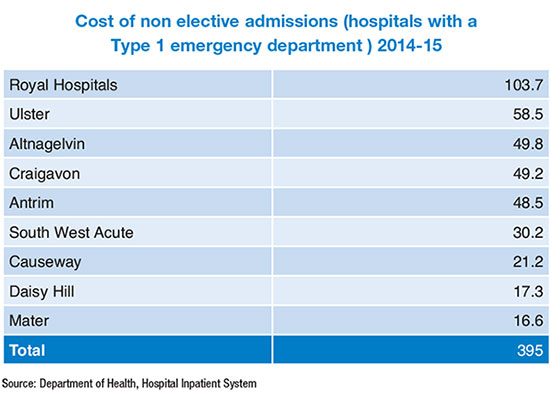
An ageing and growing population, more susceptible to chronic illness has driven up demand for acute hospital care and as a result more people are now likely to present at emergency Departments (EDs) and require acute admission. It is estimated that in 2015-16, 20 per cent of all patients attending EDs required admission. The report points to a need for greater capacity within health and social care services, beyond the volume of hospital beds, to a greater focus on
innovative care models that will allow for more effective bed management.

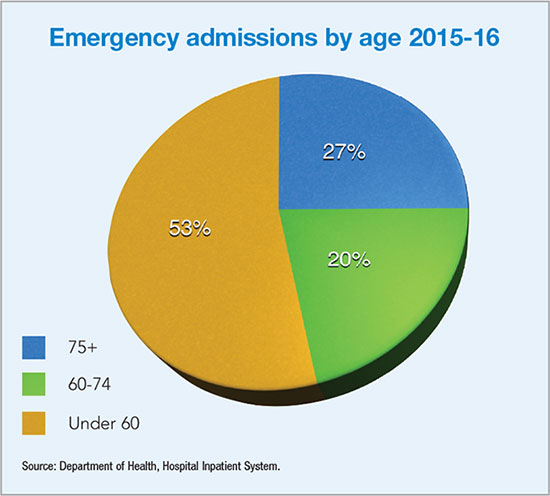
Targets by the Department of Health to reduce incidence of acute hospital admissions for patients with one or more long-term conditions have not been met, partly down to rising admission numbers. An original target in the 2008-11 Programme for Government was to reduce unplanned hospital admissions by 50 per cent by March 2011. That figure was revised down to 10 per cent for 2012 to 2014 under the Commissioning Plan Directive. For 2015 the figure was scaled down further to 5 per cent. None of thses targets have been met and the 5 per cent target remains in place for 2016.
While “earnest efforts” have been made to increase the efficiency of the patient pathway through emergency care in recent years, the report highlight “room for improvement” in balancing elective care and ED emissions. It states: “Too many patients admitted as emergencies still face unnecessary delays in their discharge from hospital due to problems in securing appropriate care packages in their homes or the community.”
Wider constraints, such as financial pressures, have also played a part challenging the sector. The report points to shortages of emergency medical staff, demographic changes and an unsustainable “historical configuration” of hospital services as all playing a part. However it commends frequent action on the part of senior executives within the sector to review and change systems and processes, as well as monitoring performance and outcomes.
Three key aspects have been identified in order to provide better emergency admission management. These include preventing those who do not need to be admitted from being so; ensuring those admitted only stay for the required time; and ensuring treatment In the most appropriate setting. It points to acute service prevention initiatives such as keeping people healthy in their home and supporting patients in the community as examples of innovation and recommends that innovation shows evidence of improvement and success, it is essential that it is adopted comprehensively across the sector. Quickly making it part of mainstream activity and allowing it to replace traditional ways of working.
The release of the Health Minister’s vision for reform (Transforming Your Care) is acknowledged in the report, as is the greater focus on emergency care through the Unscheduled Care Task Group and efforts to deal with some of the challenges raised within it. The report calls for the Department and its partners to “accelerate” pursuit of transformational change in emergency hospital admissions.
Donnelly concludes: “Many of the messages conveyed in my report are echoed in the recently published Bengoa Report which reaffirms the need to rebalance the system of care away from acute hospital settings towards community and primary care provision. Having set the strategic direction, therefore, it is crucial that the Department provides ongoing support to health and social care providers to ensure that more effective models of emergency care, along the lines described in my report, are implemented and that the pace of change is increased.”

